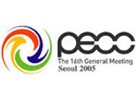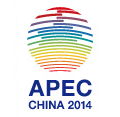Against the background of increasing international focus on global value chains (GVCs), the Board of the New Zealand Pacific Economic Cooperation Council (NZPECC) commissioned research from Coriolis into GVCs with respect to New Zealand’s dairy sector. Two representative products were selected – Infant Formula and UHT Milk.
The research was asked to identify the position of New Zealand firms in value chains for those products, map representative costs, identify the barriers to those firms occupying different (more valuable) positions, with a view to ensuring New Zealand trade policy was better informed in this area and identifying implications for policy. The data used in the research was sourced solely from publicly available sources by the Consultant Coriolis.
The final report should be read as a whole: taking elements out of context risks misleading conclusions. The final report is directed mainly to an expert audience and its results should therefore be interpreted with care. The report notes that in both value chains there are a wide variety of positions and strategies that firms adopt. The report is focused on the issues around how to maximise value from some of New Zealand’s exports in the agriculture sector, which is recognised as a key sector for New Zealand.
The value chain for Infant Formula is relatively complex and every participant earns their return. The more profitable positions in the value chain are also more defensible and have strong barriers to entry. The high defensibility and asset intensive nature of many positions further along the value chain is assessed as the single largest barrier to New Zealand firms occupying such positions.
The value chain for UHT milk is comparatively simple and short, but manufacture in New Zealand for export is relatively unattractive compared to e.g. infant formula – the product is primarily water and the domestic market small. The main barrier to exporting more UHT milk is assessed as identifying a way to do so profitably.
Overall, the GVC analysis provides new information and identifies some implications for policy but its major contribution is to draw together and sharpen the focus around a number of already known issues.
The report raises issues, but deliberately does not propose solutions. It is designed as a contribution to discussion and reflection about future directions for New Zealand’s exporting sectors. A number of issues, such as underpinning organisational structures and economic policy settings, were out of scope for the research.
The full reports and related documents are available Here. The reports are copyright to NZPECC and the usual provisions about reproduction apply. Any queries regarding this report should be directed to NZPECC Board member Brian Lynch, brianlynch344@gmail.com or 0274 452 958, in the first instance










